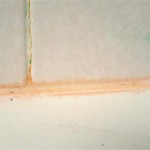How to Tile Around a Bathroom Vanity Unit
Tiling around a bathroom vanity unit is a common home improvement project that can significantly enhance the aesthetic appeal and functionality of the space. Achieving a professional-looking finish requires careful planning, precise execution, and attention to detail. This article outlines the essential steps involved in tiling around a bathroom vanity unit, covering preparation, cutting tiles, installation techniques, and finishing touches.
Before commencing any tiling project, it is crucial to thoroughly assess the existing conditions. This involves inspecting the subfloor or wall surface for any imperfections such as cracks, unevenness, or moisture damage. Addressing these issues before tiling is paramount to ensure a stable and durable foundation for the tiles.
The selection of appropriate materials is equally important. The type of tile chosen should be suitable for bathroom environments, characterized by moisture resistance and slip resistance. Ceramic and porcelain tiles are common choices due to their durability and availability in various styles and sizes. The correct type of adhesive and grout should also be selected, taking into consideration the type of tile being used and the specific requirements of the bathroom environment. Tools such as a tile cutter, notched trowel, level, spacers, and grout float are necessary for a successful project.
Preparing the Surface and Vanity Unit
Proper surface preparation is the cornerstone of a successful tiling project. The surface to be tiled must be clean, dry, and level. Any existing wallpaper, paint, or adhesive residue should be removed using appropriate solvents or scraping tools. If the surface is uneven, a self-leveling compound or cement board can be used to create a smooth and uniform base. The use of a primer is generally recommended to improve adhesion and protect the underlying surface from moisture penetration.
The vanity unit should be properly installed before tiling begins. This ensures that the tiles are fitted correctly around the unit’s dimensions. Measure the vanity's dimensions accurately and mark the area on the wall or floor where the tiling will extend. Account for any necessary clearances or overlaps. It is advisable to protect the vanity unit from potential damage during the tiling process by covering it with plastic sheeting or drop cloths.
Furthermore, consider the placement of essential plumbing fixtures. The positioning of water supply lines and drain pipes will influence tile cutting and layout. If modifications to the plumbing are required, consult a qualified plumber before proceeding with the tiling project. Ignoring plumbing considerations can lead to costly mistakes and delays.
Cutting Tiles for a Precise Fit
Accurate tile cutting is essential for achieving a professional and aesthetically pleasing result. The most common tool for cutting tiles is a manual tile cutter, which uses a scoring wheel to create a groove on the tile's surface before snapping it along the score line. For more complex cuts, such as those around pipes or irregular shapes, a wet saw is recommended. A wet saw uses a diamond blade and water to cool the blade and minimize dust during cutting.
When cutting tiles around the vanity unit, precise measurements are critical. Use a tape measure and a marking pencil to accurately transfer the required dimensions onto the tiles. For curved or irregular shapes, create a template using cardboard or paper and transfer the template onto the tile. Remember to account for grout lines when measuring and cutting tiles to ensure a consistent and professional appearance.
For cutting holes for pipes, use a hole saw or a tile nipper. A hole saw is a circular blade that attaches to a drill, allowing for precise and clean holes. Tile nippers are hand tools used to slowly chip away at the tile until the desired shape is achieved. When using tile nippers, it is advisable to work gradually and avoid applying excessive force, which can cause the tile to crack.
Always wear safety glasses and gloves when cutting tiles to protect your eyes and hands from debris and sharp edges. It is also recommended to work in a well-ventilated area to minimize exposure to dust. After cutting the tiles, use a rubbing stone or sandpaper to smooth any rough edges.
Applying Adhesive and Installing Tiles
The application of adhesive and the installation of tiles is a critical stage in the tiling process. Select a suitable adhesive based on the type of tile being used and the substrate material. Apply the adhesive to the surface using a notched trowel, holding the trowel at a 45-degree angle to create consistent ridges. The size of the notched trowel depends on the size of the tiles. Larger tiles typically require a larger notched trowel to ensure adequate adhesive coverage.
Press the tiles firmly into the adhesive, using a slight twisting motion to ensure good contact. Use tile spacers to maintain consistent grout lines between the tiles. Remove any excess adhesive from the tile surface with a damp sponge before it dries. Regularly check the alignment of the tiles using a level to ensure they are straight and even. If necessary, tap the tiles gently with a rubber mallet to adjust their position.
When tiling around the vanity unit, pay close attention to the corners and edges. Mitering the edges of the tiles can create a clean and professional finish. Mitering involves cutting the edges of the tiles at a 45-degree angle so that they fit together seamlessly. Alternatively, tile edging strips can be used to protect the edges of the tiles and provide a decorative finish.
Allow the adhesive to dry completely according to the manufacturer's instructions before proceeding to the next step. The drying time can vary depending on the type of adhesive, the temperature, and the humidity. Rushing the drying process can compromise the bond between the tiles and the substrate.
Grouting, Sealing, and Finishing
Grouting is the process of filling the gaps between the tiles with grout. Select a grout color that complements the tile color and the overall design of the bathroom. Mix the grout according to the manufacturer's instructions, ensuring a smooth and consistent consistency. Apply the grout to the tile surface using a grout float, working the grout diagonally across the grout lines to ensure they are fully filled.
Remove excess grout from the tile surface with a damp sponge, rinsing the sponge frequently to avoid smearing the grout. Allow the grout to dry slightly before polishing the tile surface with a clean, dry cloth. This will remove any remaining grout residue and reveal the true color of the tiles.
Once the grout has fully cured, apply a grout sealer to protect the grout from moisture and stains. Grout sealer can be applied using a brush or a sponge, ensuring that all the grout lines are thoroughly coated. Allow the sealer to dry according to the manufacturer's instructions before using the bathroom. Grout sealant is especially important in high moisture environments like bathrooms to prevent mold and mildew growth.
Finally, apply a bead of silicone caulk around the perimeter of the vanity unit where it meets the tiles. Silicone caulk provides a waterproof seal that prevents water from seeping behind the vanity unit and causing damage. Smooth the caulk with a wet finger or a caulk smoothing tool to create a clean and professional finish.
Carefully inspect the finished tiling around the vanity unit for any imperfections. Touch up any areas as needed and ensure that the tiles are clean and free of debris. The result should be a durable, aesthetically pleasing, and functional tiled surface that enhances the overall appearance of the bathroom.

A Quick Guide To Bathroom Vanity Units Luna Spas

Cloakroom Vanity Unit With Metro Tiles As Backsplash By Bathroom Guru Splashback Downstairs Toilet

How To Diy A Bathroom Vanity Unit Wood Create

How To Diy A Bathroom Vanity Unit Wood Create

10 Easy Steps For Installing A Bathroom Vanity Unit Victoriaplum Com

How To Install A Vanity Unit Victorian Plumbing

Do You Tile Behind A Vanity Unit Commercial Washroom Refurbishment Washrooms

Choosing The Perfect Height For Your Bathroom Vanity Unit Victoriaplum Com

How To Diy A Bathroom Vanity Unit Wood Create
How To Choose A Bathroom Vanity Part 1 The Basics Tileist By Tilebar
Related Posts







